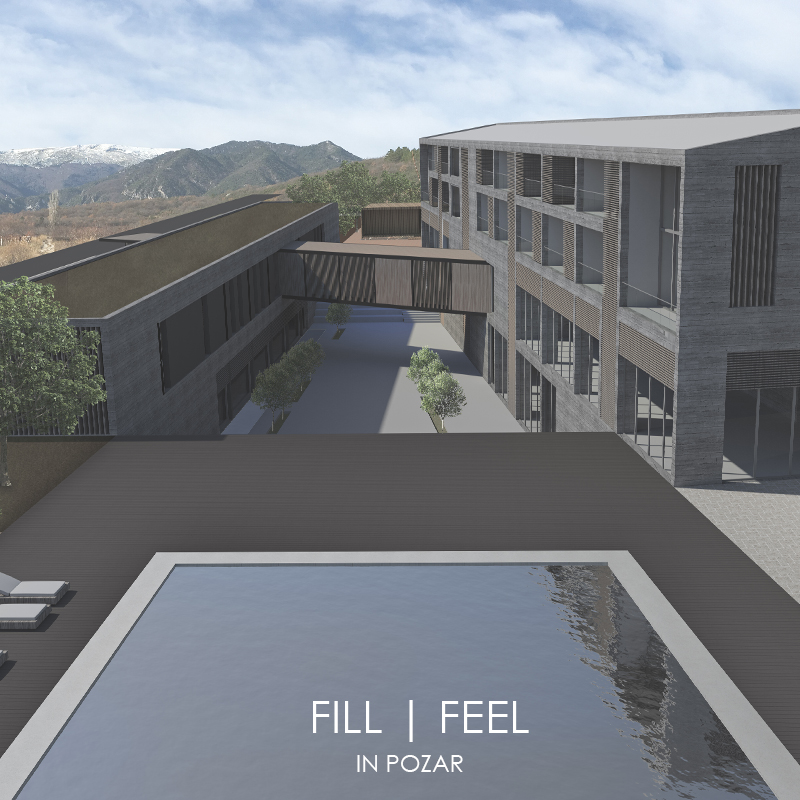

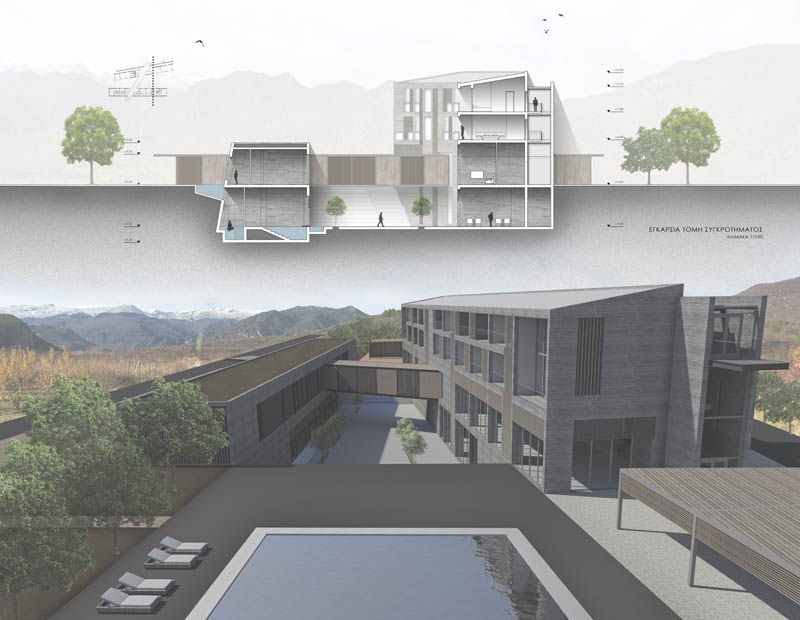



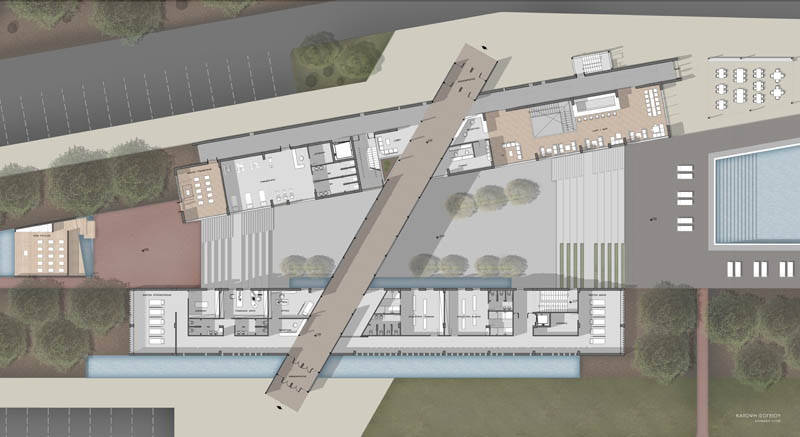

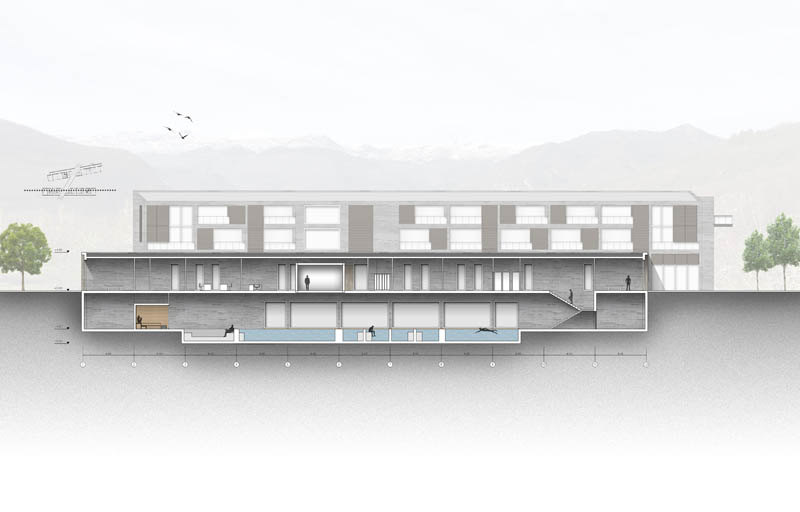

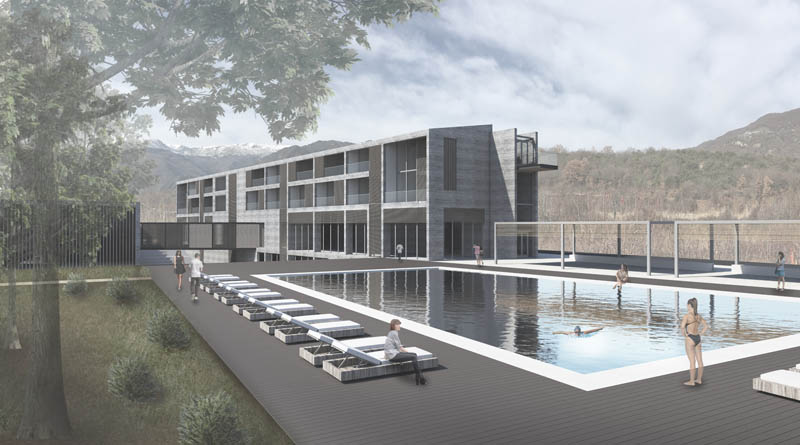

This diploma project concerns the design of a tourism complex, in the region of “ Pozar” thermal baths. Along with the natural shaped therapeutical baths and the existing infrastructures, the drawn installations, aim to supplement the jigsaw puzzle of the wider region (Fill in Pozar) and provide to the visitor the uniquely combined sense of staying and wellness (Feel in Pozar) focused on liquid element, a hallmark of this place. The main aim is a completed building program, which covers all visitor’s needs during his accomodation and is able to show the destination off in terms of therapeutical tourism. In particular, is required the construction of a modern bathing building-spa, the use of which, through a specified route, will create for the user an experience of relaxation such physically as mentally. This procession concerns a cure operation that takes into consideration the human body and its various needs. Then, is considered, the creation of a “boutique” hotel with 32 beds and 6 different, as for the composition, types of rooms, but common, in other ways, aesthetics of design. The hotel is not subjected to classical ideals, despite it focuses on the differentiation of experience of lodging. A third mass, penetrates the two buildings from one side to another and as a corridor it essentially bridges them. These two buildings are met under the corridor, in an open square, under the level of the ground. The structure of this area aims in the “coexistence “of the visitors in the “internal” of the complex and creates a new “path” in the plot. The significance of flow in the spaces constitutes an important issue about their composition. The masses are linked in order to create a world of continuous, reciprocal adaptation and movement between each building and render the complex capable of operating and receiving its crowd.
Supervisor: Adamakis Kostas
Reference Number: 661
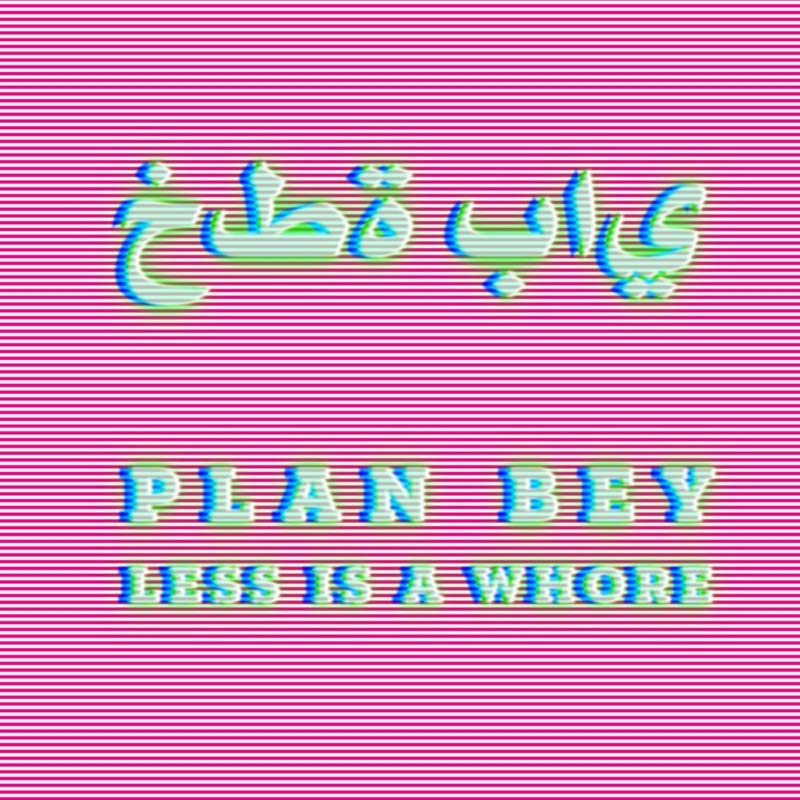

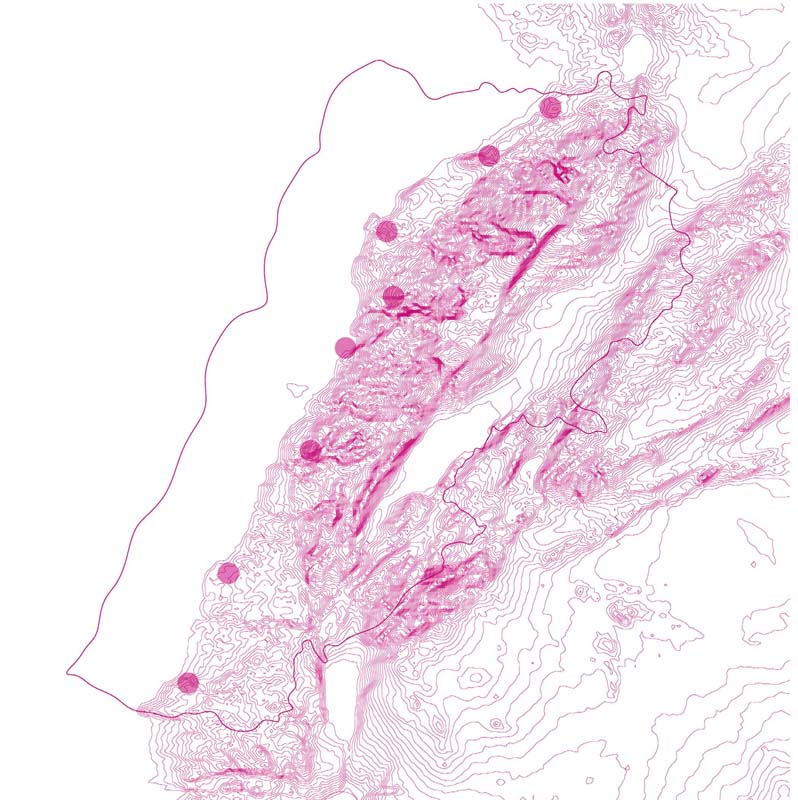



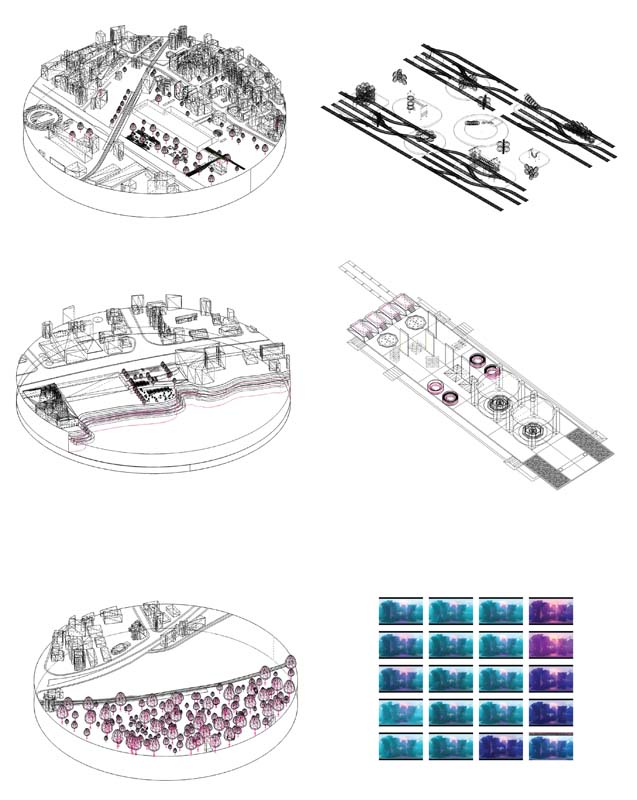

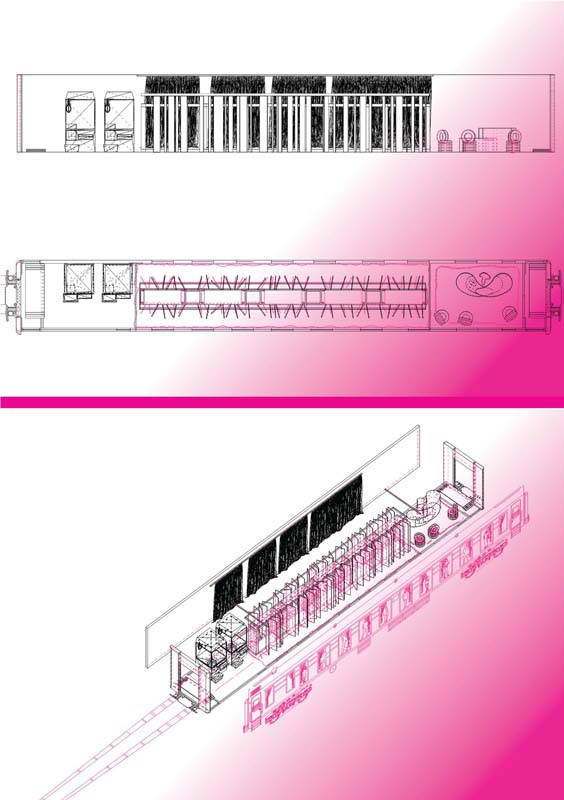

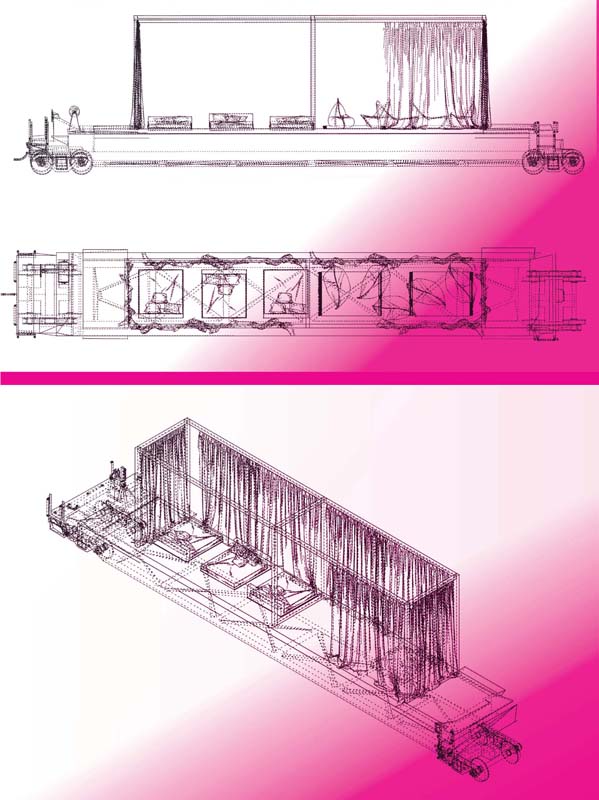

Lebanon’s past has left profound marks on the postwar present - the physical and psychological wounds of violence during the war, the slow recovery due to the resource reallocation of political, social, and material foundations, as well as the drastic demographic changes caused by mass migration and displacement throughout the war. We attempt through the notion of trauma, collective memory and history, to interpret the molding of the country’s urban fabric, the reallocations and inequalities that arise, the gross lack of public space and lack of expression of individual entities and of the collective.
A superficial reading of the recent history gives rise to the distinctive notion of time, a notion that the country is tied to the present, that it cannot progress forward, while being unable to look back. Upon observation of Beirut’s urban fabric, one can argue experiencing detachment from the past, from a traumatic abruption, followed by a culture of silence. Coincidentally, the future appears equally unattainable, as the continuous political tensions and the recurring acts of violence prohibit the formation of a consistent approach to the future of the city.
The deferred past resembles a prolonged and eternal present, as it is suspended between the past and future, with the latter two seeming largely unattainable. The word suspended gives rise to the feeling of deferment in a void, of suspension and, finally, of oppression of the individual.
The absence of public spaces in Lebanon -- and in a large extent in the greater urban fabric of Beirut -- as well as in its other cities; the fact that Beirut is renowned for its sex-tourism within the homosexual community; for the wider Middle East, the abandoned railway network with corroded carriages which encompasses the motorway responsible for intertwining the cities of Lebanon with Israel and Syria: all constituted the assemblage of motives behind Lebanon’s sexograph, which attempts to decipher the public space, by way of expressing an individual's sexuality.
The sexual utopia produced on an experimental scale through the aforementioned triggers, ultimately constitutes the subjective perception of the public space, through the expression of the oppressed, to an exorbitant extent. We consider the thematic park of sexuality, as the unique response to starchitects’ thematic parks of skyscrapers currently flooding the Middle East, as smaller scale interventions are suppressed at the infancy stage of design, without ever maturing to the stage of actual implementation.
Supervisor: Mitroulias Giorgos
Reference Number: 681
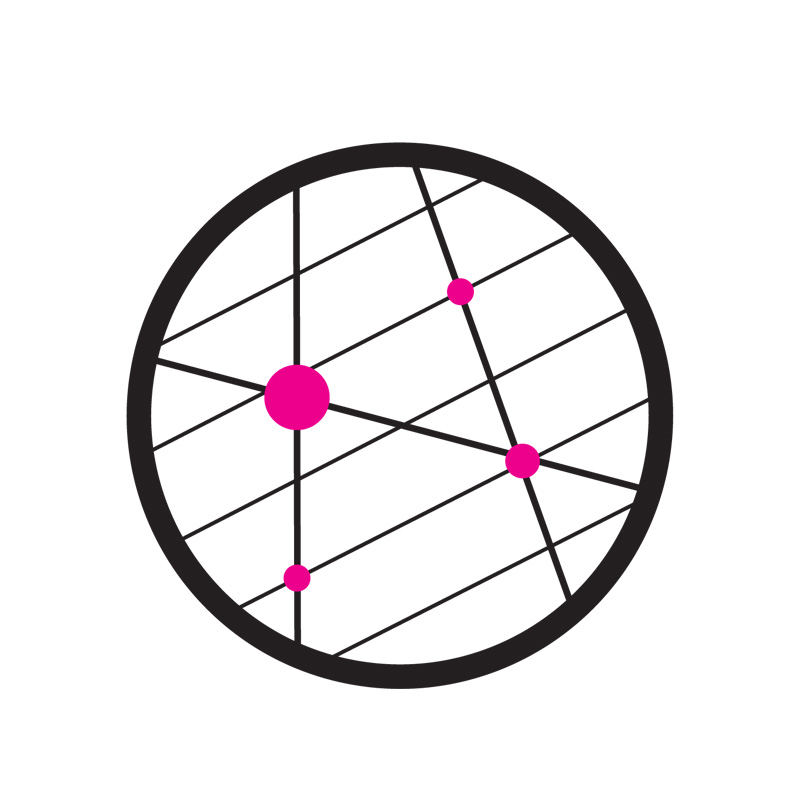

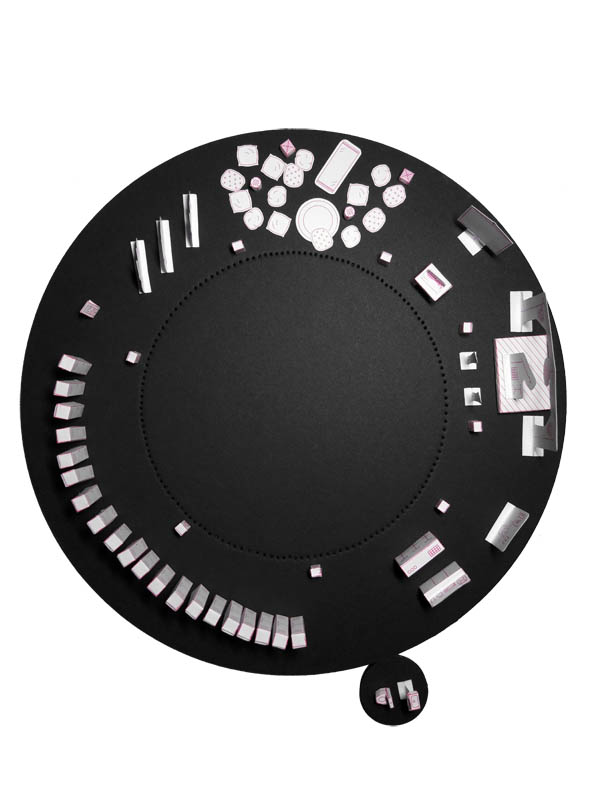

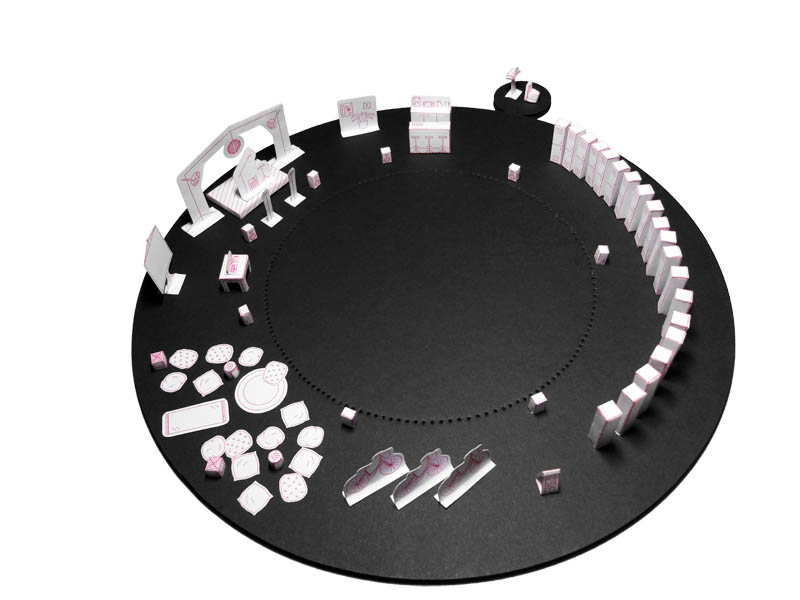

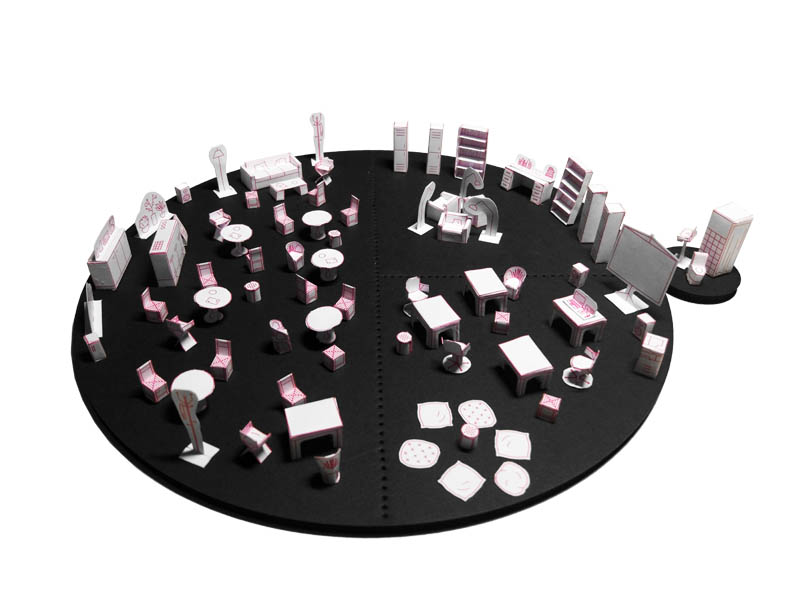

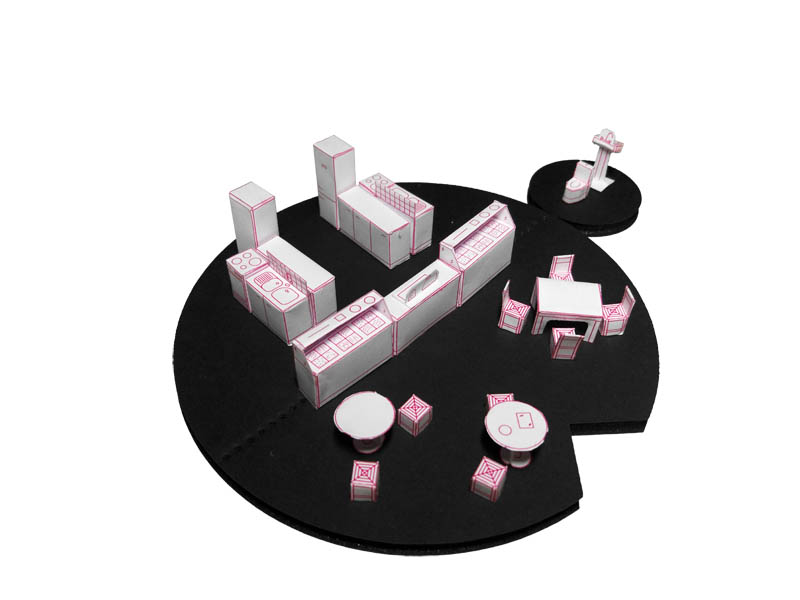

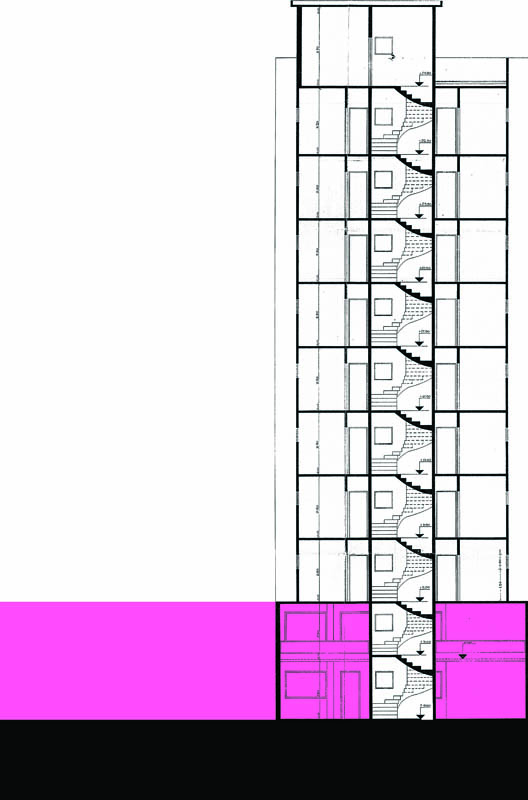

The current thesis sets as its starting point the notion of ownership. It tries not only to understand the ways ownership is conceived institutionally but also to identify its barriers. Through this search it crosses the notions of seizure and auctions within the frame of Greece.
Digitalization, which is set as the second cell of this thesis, appears as the meeting point of a huge number of subjects located around the world. Within the frame of technological evolution and the possibilities arisen, we can locate an amount of digital platforms with the objective of bringing together the common interests of different people worldwide. Interpreting these platforms through the perspective of the classical action of exchanging (give-take),a new, narrower field of research is set and its depiction is attempted; the greek digitalization.
Going further into the research, a considerable sample of seized real estate in the municipality of Thessaloniki is selected and recorded. Hence, a real estate net of seized spaces is designed as a supportive action coming to the aid of the distressed borrower rather than being a tool of punishment against him. In other words, the aim is the use of the real estate as a means of profit towards the gradual decrease of the underlying debt.
The different spaces (real estate) are chosen to host different uses open to the rest of the city and they are inter-connected among each other within the intangible space of the digital platform “Networked”. The programmatic approach of these spaces includes a variety of activities which can be described as a widen interpretation of the notion of “residency”. The notion of “residency” is perceived here as the study of human life expressed within space.
Similar platforms profiting from the exploitation of real estate, with the most profound example being that of Airbnb, are profitable, well established enterprises, which are masked behind the narrative of the cooperative sharing. The proposal of this thesis envisions a real estate net which encompasses the true meaning of the notion of community with the objective of a beneficial social impact. It strives not only to give spatial solutions, but also to solve matters related to administration, management and the traffic of profits in a potential application of the proposed idea.
Supervisor: Kotionis Zissis
Reference Number: 673
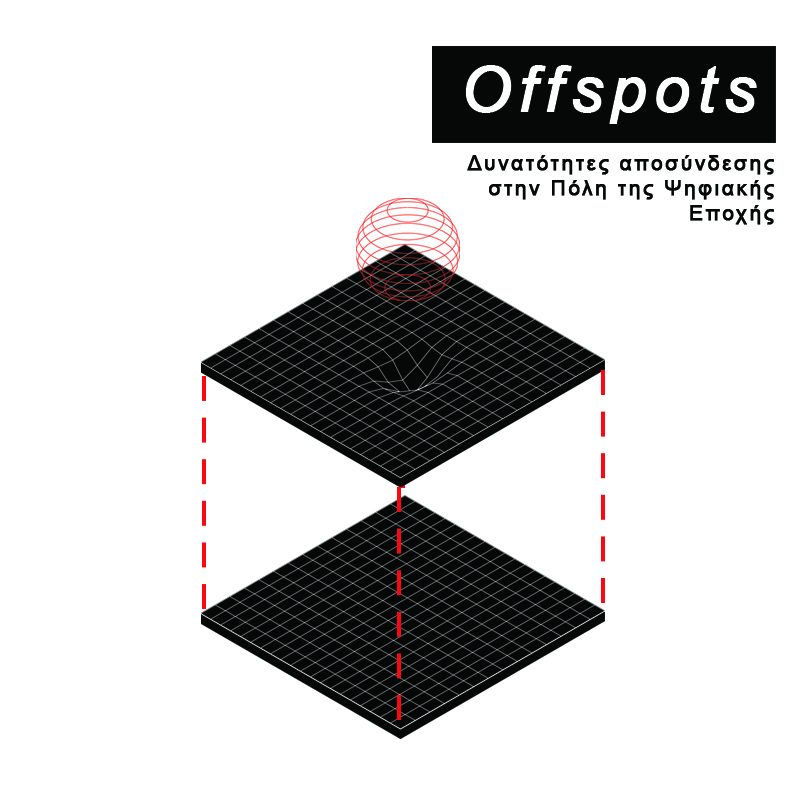

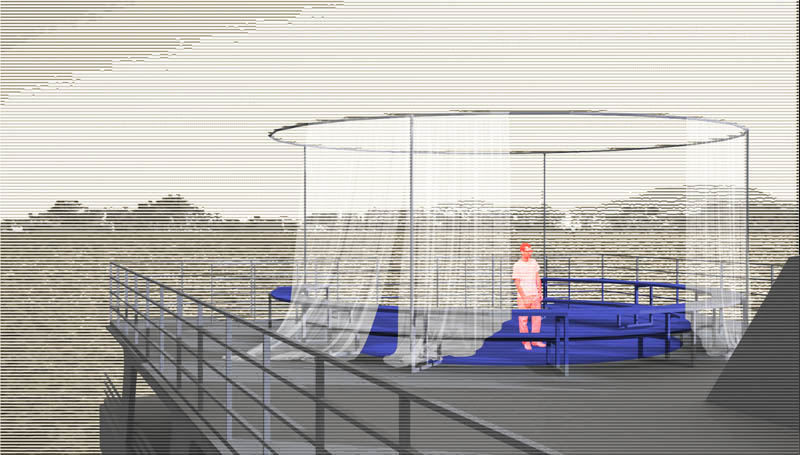

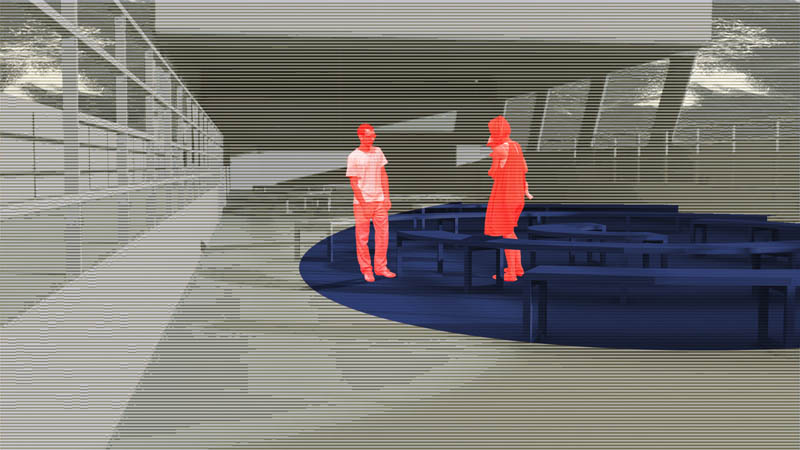

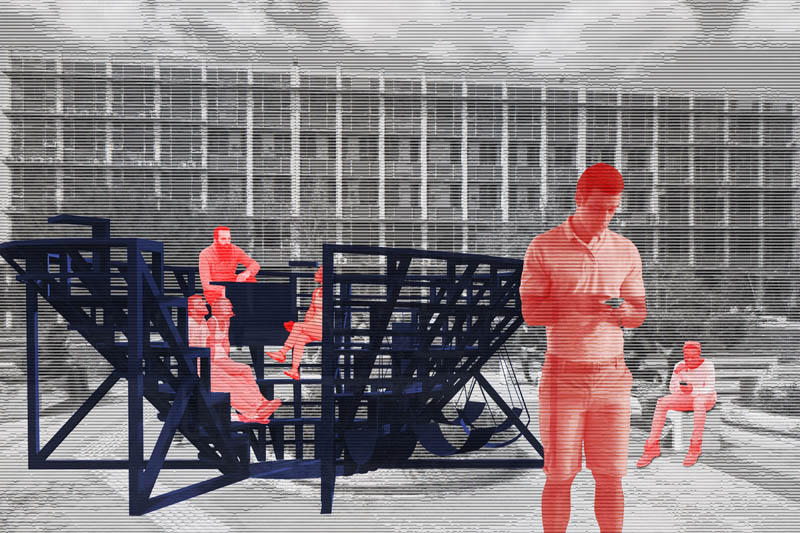

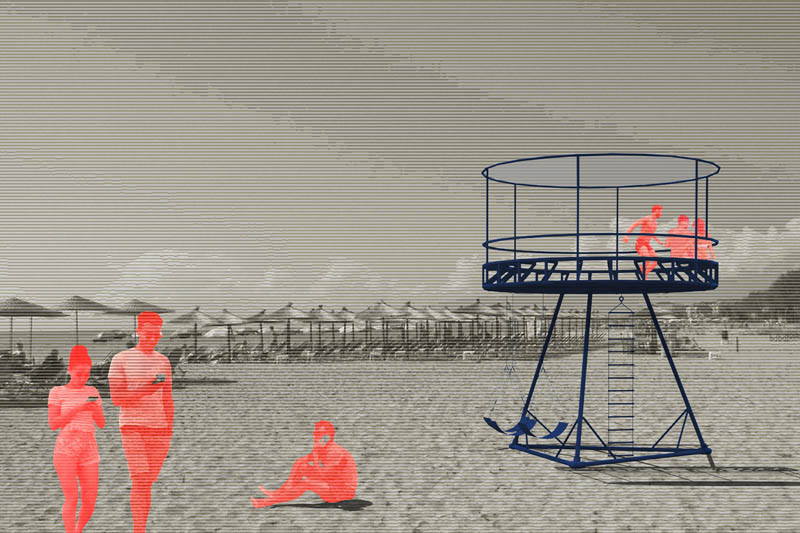

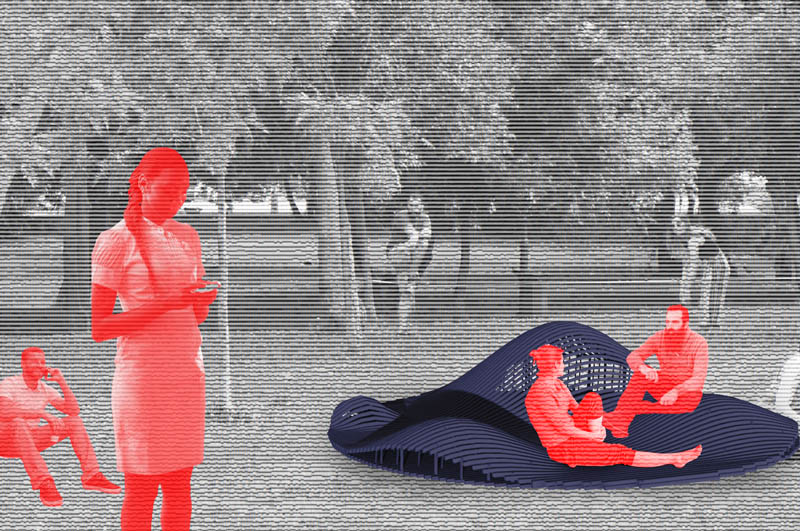

Over the last decade, technology appears to be increasingly entering the everyday life of the individual. Networks are constantly expanding and seem to be "ubiquitous" while users are increasingly clinging to the customized services provided through the internet and modern technologies. Issues arise, however, regarding the data which are produced, collected, stored and exploited by third parties, enhancing surveillance, commercialization and the exercise of power. At the same time, the capabilities of the individual to resist this contemporary model seem to be constantly restricting due to constant connectivity. The possibilities of disconnecting from the networks in the modern urban environment are being explored as an attempt to redefine the boundaries of connectivity. The project aims to meet an emerging need; to be off the network. Thus, it is attempted to develop a new network that works alongside the existing one and relies on others to spread. Starting from the urban network and the city of Volos, the action is extended to the national network and then to the Mediterranean network, based on a scenario of dissemination and consolidation of the need for disconnection. It aims at the emergence of a new community with common concerns regarding the redefinition of digital networking.
Supervisors: Lykourioti Iris, Psychoulis Alexandros
Reference Number: 660
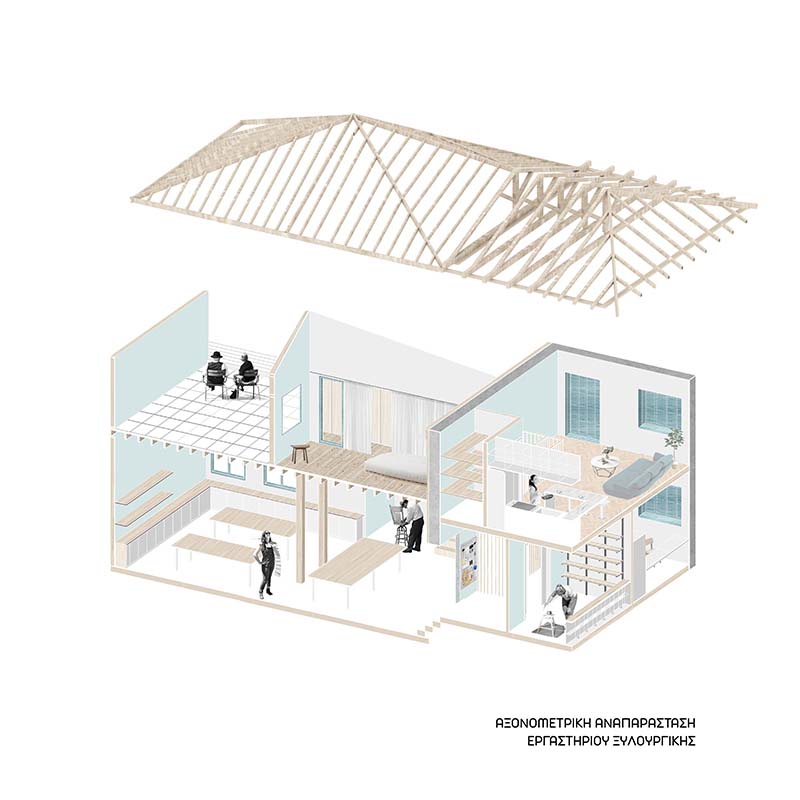

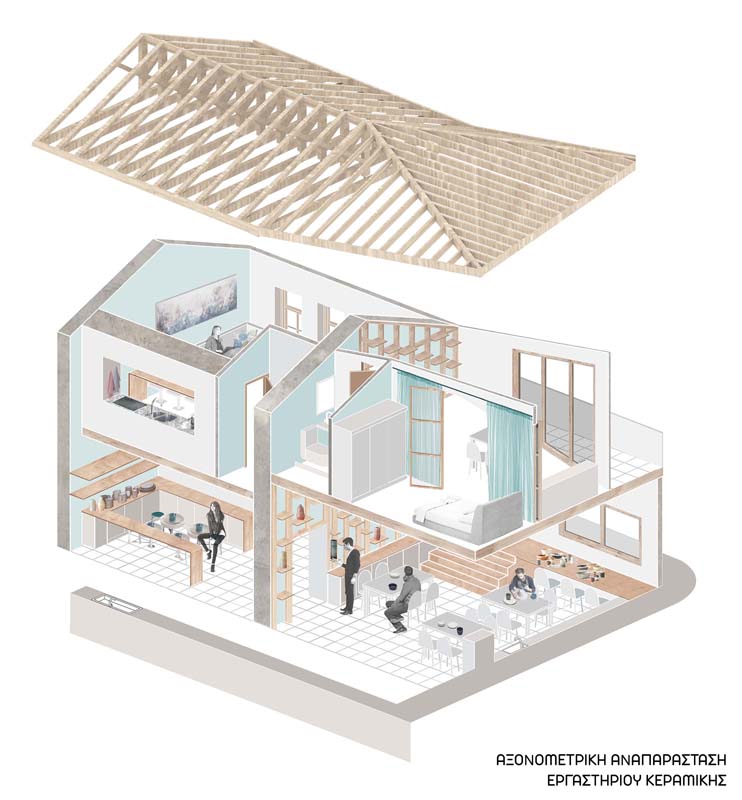

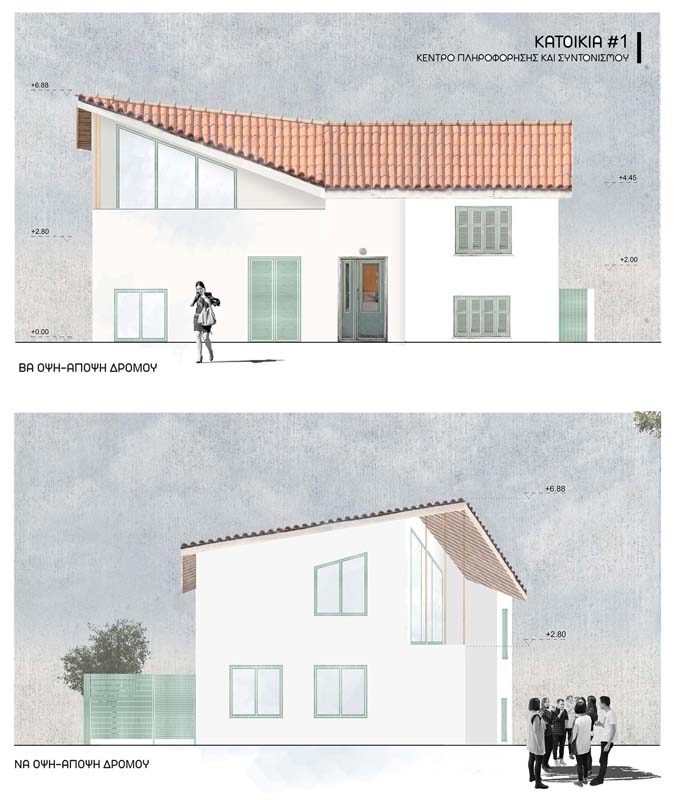

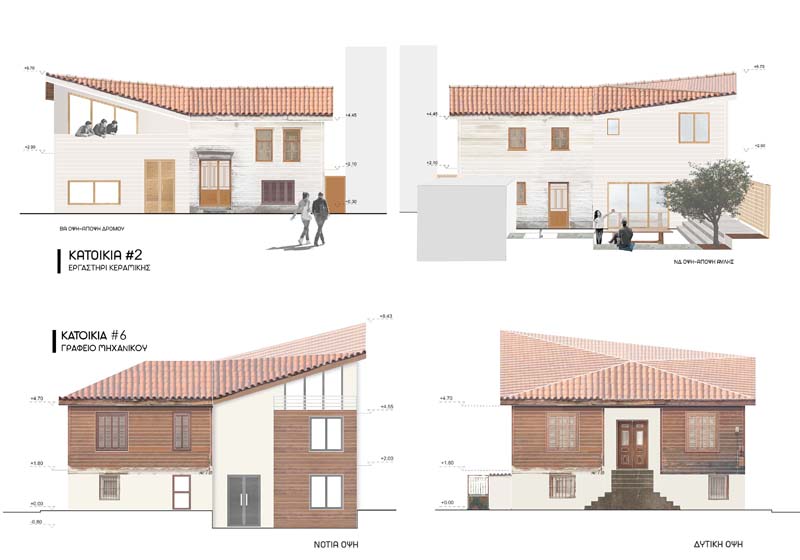

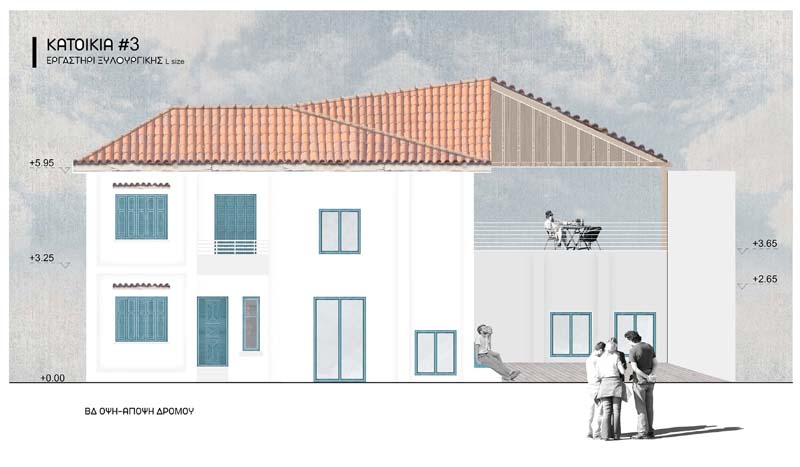

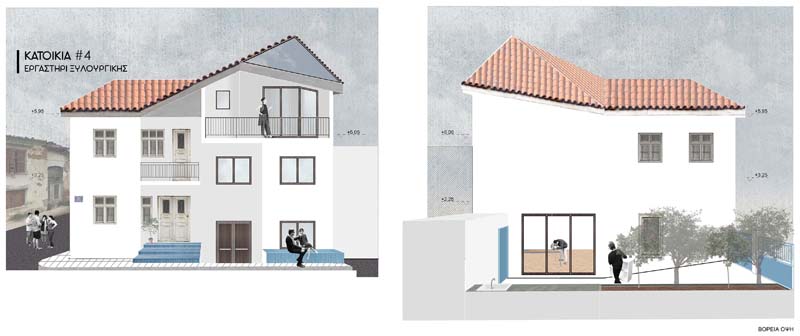

A big percentage of the refugees that came to Greece in the first half of the 20th century, settled in the prefecture of Komotini, creating new rural villages or new districts in the periphery of Komotini. One of those districts became the core of this thesis.
The population of the district of St. George in Komotini is shrinkening gradually, leaving behind abandoned residentenced-souvenirs of another era. It is the architectural and historical value of this area, in addition to the significant residential stock which remains untapped, that created the desire of the finding of a strategy that could bring to life the residences and the whole district in the same time.
The proposal in set in two basic axes:
a) The attracting of active population in tha area motivated by the RECO workshop, a way to recooperate, reconstruct and reconnect. Through a participatory design strategy the residents of the district are motivated to turn the area to a network of knowledge, art and craft, through a series of workshops and actions that will finally lead to the restoration of the whole area. The proposal is based on the creative cooperation of the residents, the prefecture of Komotini, specialized craftsmen willing to create new work studios in the district and share their knowledge in crafts and everyone that wants to participate and learn. The designing decisions are taken in common through open community discussion in the presentation centers and in the new info center everyone can be informed about the actions and the programmes that are about to happen, in case he wants to join in.
b) 6 vacant houses with an usused same plot next to them, are about to be the core of the RECO workshops. Timber frame extensions will be constructed in that plots, working as parasites that will copy the base point of the original residence and adjust it to something new, according to the residential requirements of nowadays. The new combination of residences will work as semi-public workplaces in the base floor and private housing for the craftman in the top levels.
Supervisor: Mitroulias Giorgos
Reference Number: 688
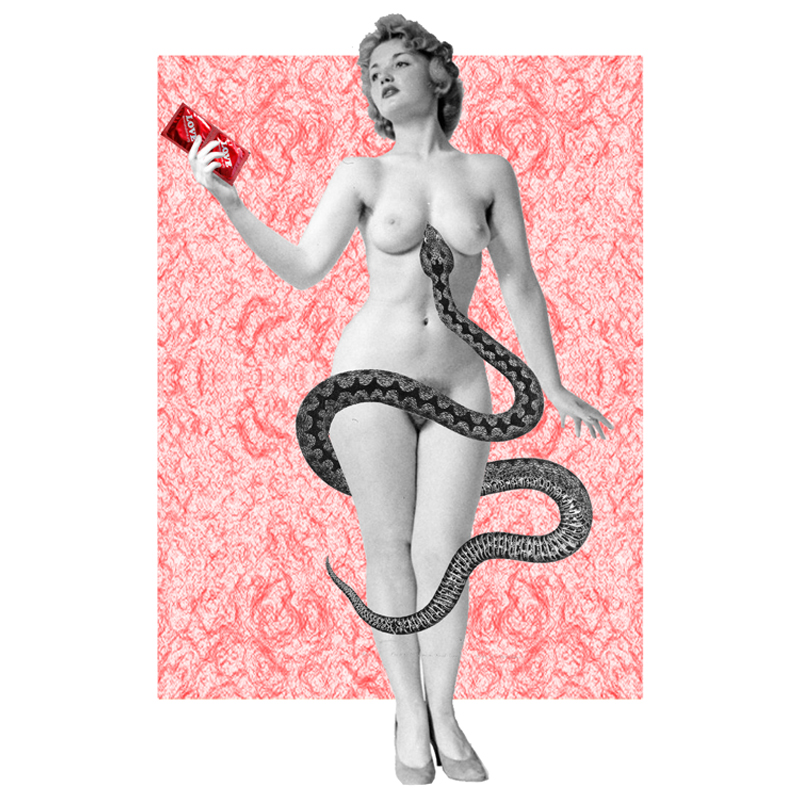

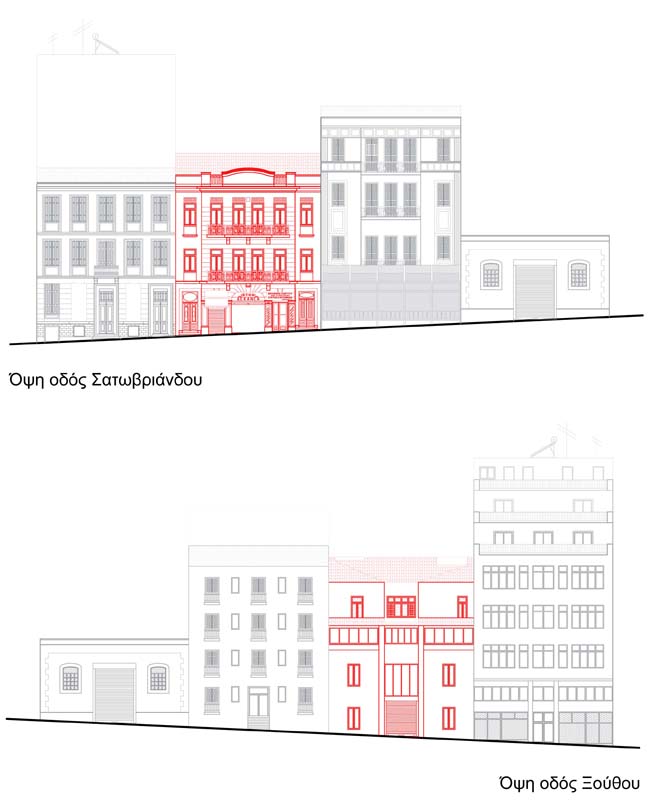

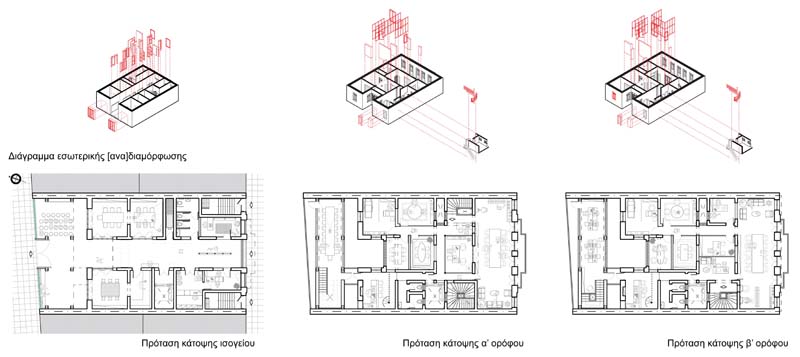

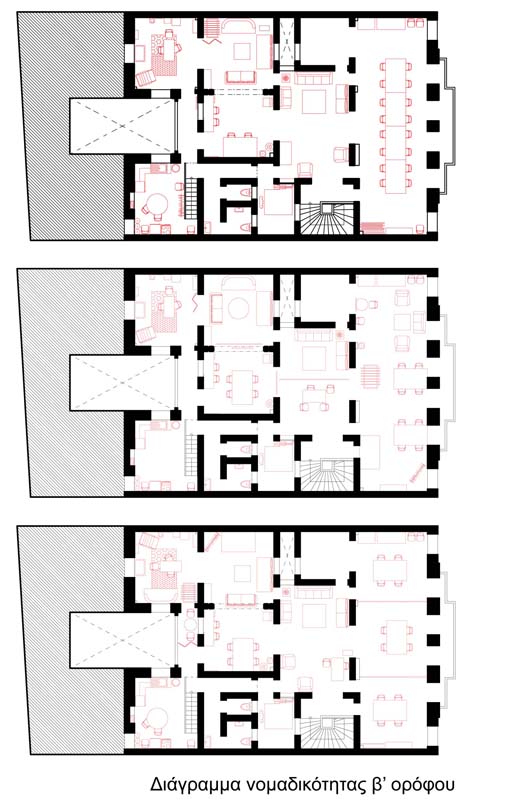

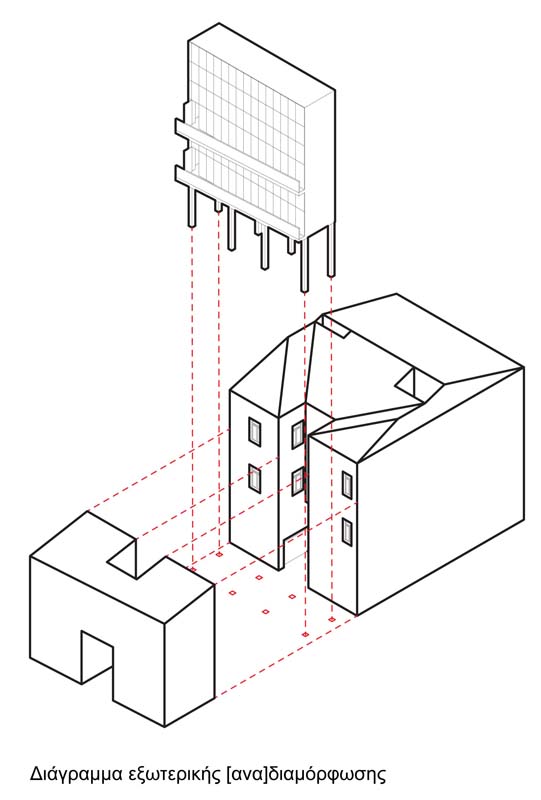

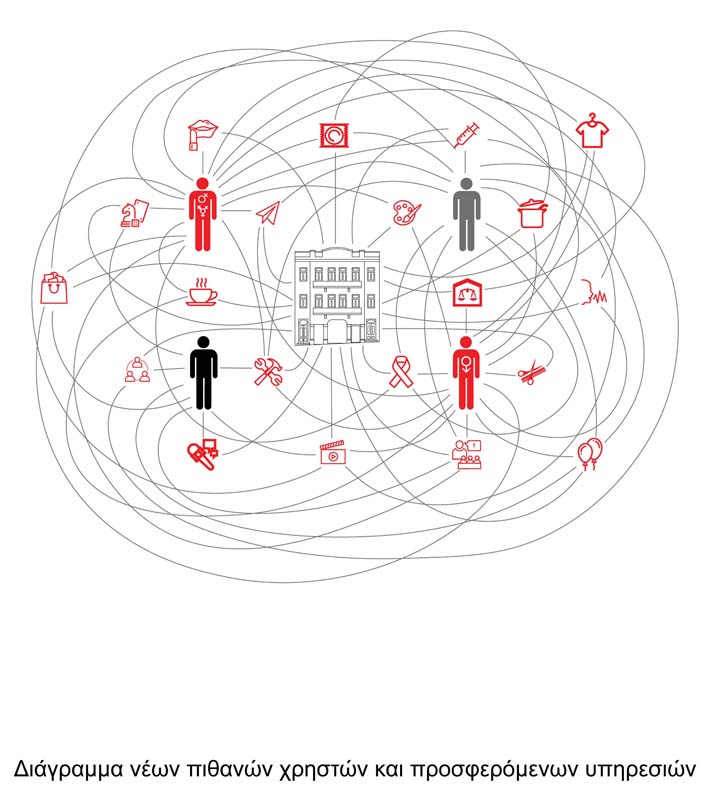

This diploma thesis deals with the refurbishment of an eclectic building in Omonia area of Athens, which now hosts a non-profit organization, offering a range of services to sex workers & advocates for their rights, named Red Umbrella Athens. The main reason to engage in this project was the research question of how sex work appears in the modern urban environment of Athens.
In addition to theoretical research and bibliographic review, part of which is reflected in the bibliographical references, I have had direct contact with the sex workers’ community as a volunteer at Red Umbrella Athens. Having identified how the center works and having mapped its needs, I have decided that the object of this thesis would be to remodel the existing shell according to the realistic functional needs of Red Umbrella Athens.
Given the fact that the building presents a state recognized landmark, its history was researched and surveying plans were produced, useful both in the context of this diploma thesis and in the creation of an archive for future use. Based on the above, the main parameters of the synthetic process were defined as the users (staff/volunteers-sex workers), the action and the building. The attempt to reconcile the needs of serving this particular social group to the legal commitments concerning the monumental nature of the building, through the personal engagement were a particular architectural challenge.
The basic synthetic principles taken into consideration for the final design were the functionality of the space according to the spatial needs of Red Umbrella Athens, as well as the redefinition of the symbolic boundaries between the different potential users. At the same time, it was preferable to create a comfortable and modern environment that is not stereotypically inspired by the sex workers’ community, but is intended for them and treats them with respect and non-discrimination. Thus, the purpose of the proposed design is to enhance and highlight the work of Red Umbrella Athens.
Supervisors: Mitroulias Giorgos, Lykourioti Iris
Reference Number: 713
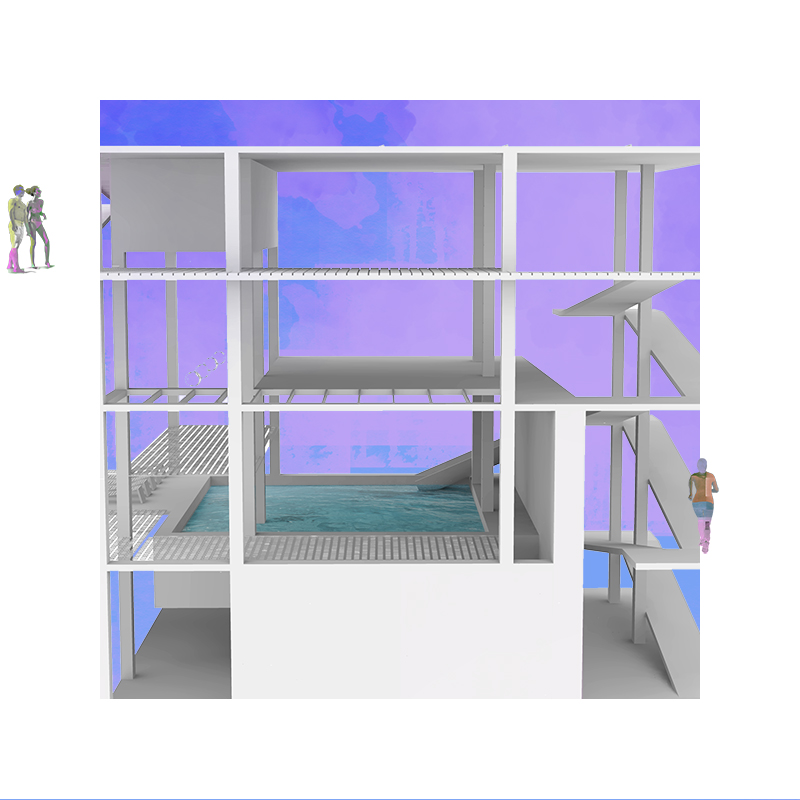



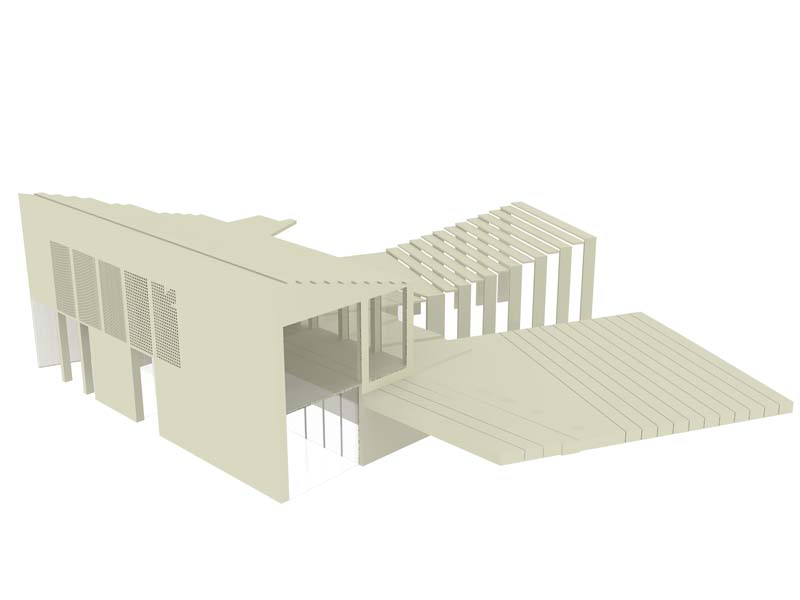

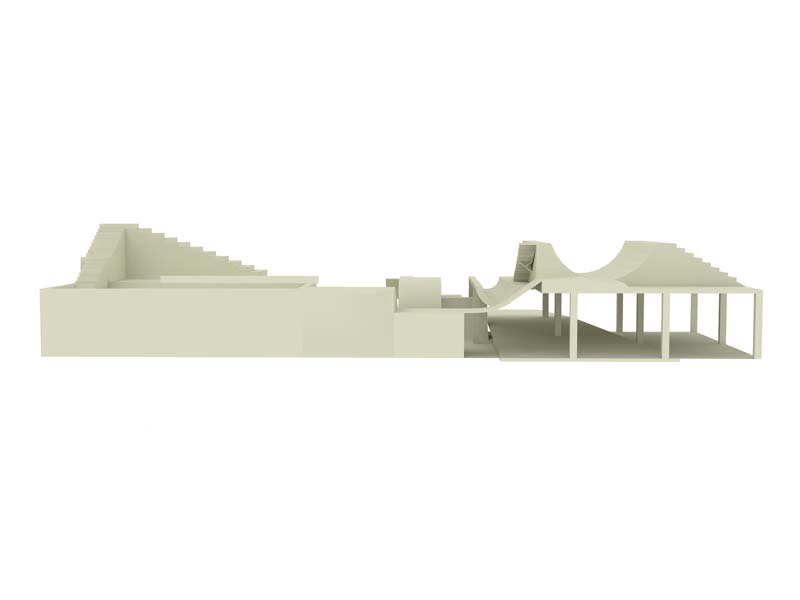

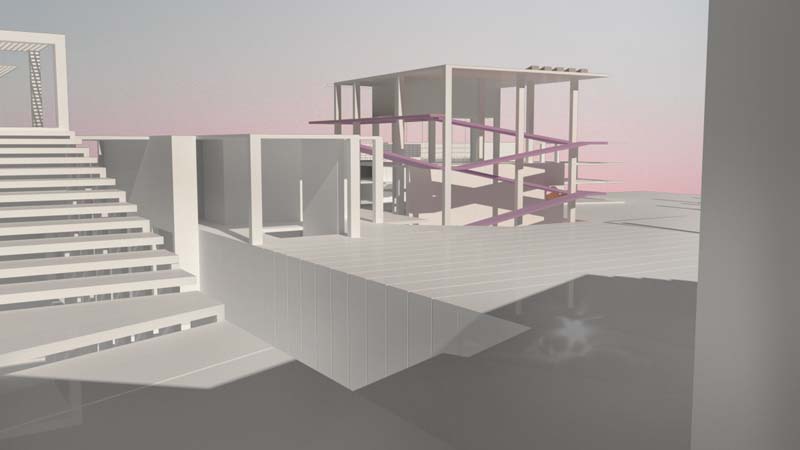

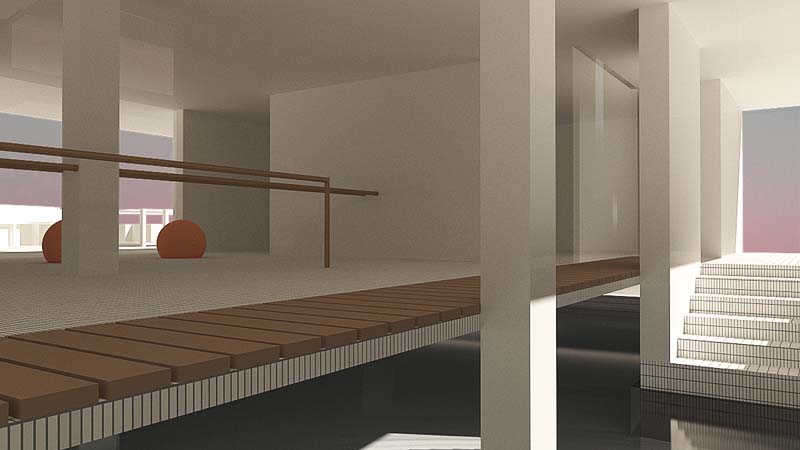

Exercise consists a vital aspect of every life nowdays. Multiple facilities and pieces of equipment, have appeared, and the types of programs and activities have increased, so as to satisfy a wide variety of demands. The necessity of such spaces in the city, that offer the possibility of exercising either as a group or personal, has become apparent. However even though the way of training has been enriched with various programs, the spaces which facilitate them remain the same. The equipment evolves without actually changing the enviroment in which is located. This particular aspect of working out has inspired the beginning of this thesis project. Re_act, proposes a series of buildings and public segments that aren’t necessarily related to the idea of the gym typology. It utilizes its elements as a base to construct a number of urban environments and unpredictable situations inside the park. In the first stages of conception, it was considered crucial to identify the range of activities and programs that already exist in the study area. This research was depicted through multiple diagrams which analyze the nature of such facilities and the social group to which they refer. This process defined the final programmatic diversity, as well as, the location of the proposal.
Supervisor: Gavrilou Evelyn
Reference Number: 706
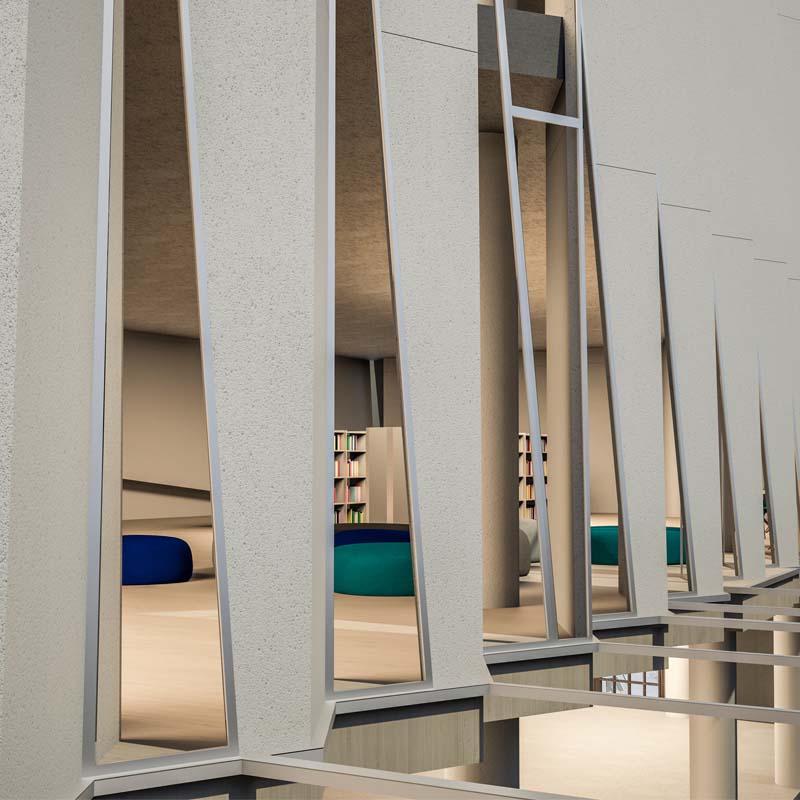



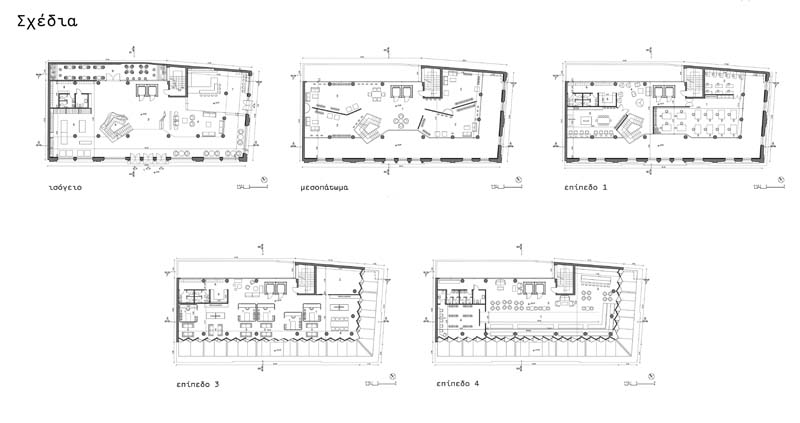

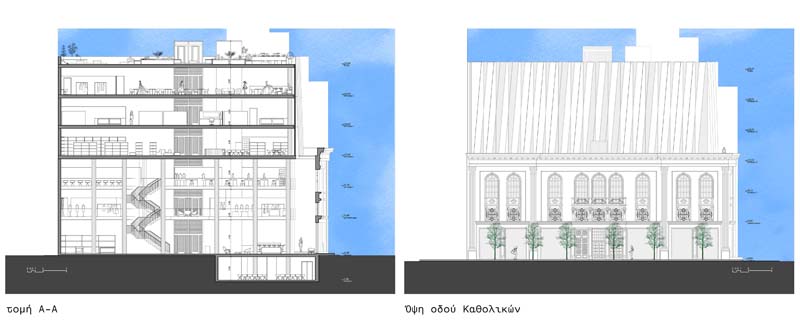

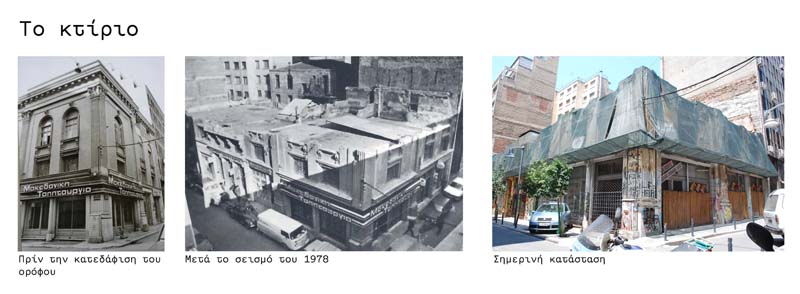

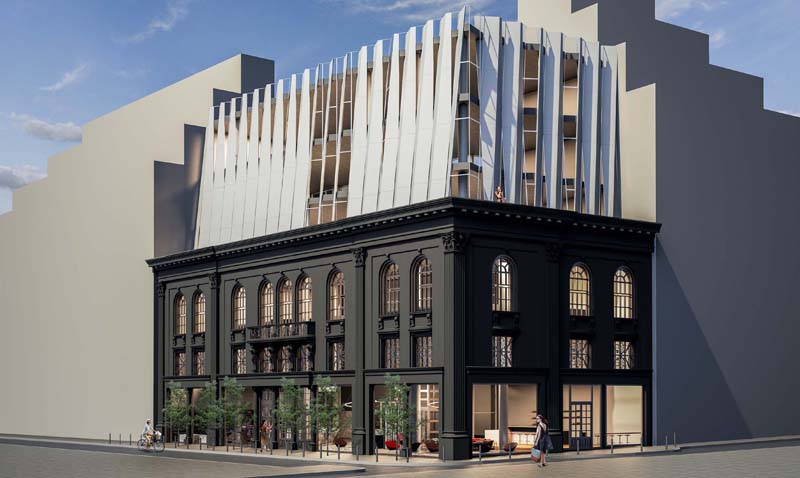

Until the late 1990s, the heart of Thessaloniki’s clothing industry beat in Valaoritou district. An abandoned building shell is the perfect foundation to build upon a fashion creators’ hub in an attempt to restore the district’s former intensity.
Through exhaustive research the building of Freemasonry Lodge “Loge Veritas”, by the architect Jacques Mosset, was found. The facades have been declared preservable and they have to be restored up to their present state. However, the fact that the building leans near collapse made it the obvious choice for this thesis.
The project includes the restoration of the existing facades and the refurbishment to their original state. Subsequently, the new building is constructed significantly behind the historic facades in order to give the impression that it rises through the original building.
Pleating is the design practice adopted for the new facades. The finding of my dissertation led to the conclusion that pleating is a common morphogenetic method for both fashion and architecture, which is what ultimately led to its selection.
The development includes functions and uses aiming towards the creation of a contemporary multipurpose centre of innovation and entrepreneurship regarding fashion.
Finally a garment was designed following the spirit of morphological exchange between fashion and architecture, strengthening the interrelation of the two practices.
Supervisor: Vyzoviti Sophia
Reference Number: 690

